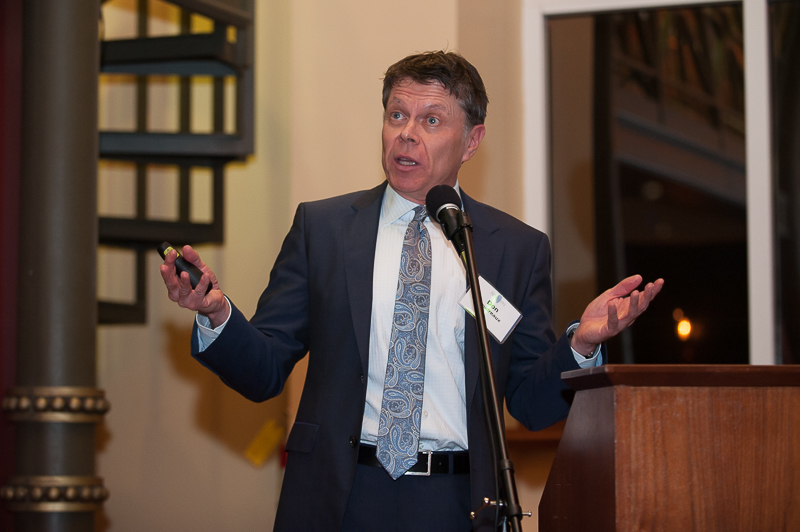Much political talk these days bemoans a decline in the standard of living for middle-class Americans. Politicians and activists cite data from the U.S. Bureau of Labor Statistics showing real wages over the past 40 years have remained largely flat, and many political speeches stress how people in the middle class are suffering.
But economics professor Don Boudreaux has a decidedly different take. At an Illinois Policy Institute appearance Jan. 23 in Chicago, he said the only thing that has diminished over the decades is an accurate view of economic realities. Boudreaux is professor of economics at George Mason University and chairman for the study of free market capitalism at the Mercatus Center in Arlington, Va.
A crowd of nearly 100 persons heard Boudreaux engagingly describe how anyone claiming the 1970s was the beginning of the end for American prosperity is wrong.
Boudreaux said a selective and narrow analysis of data, such as median household income, has painted a picture of the United States as a land where only the super-rich are gaining. If we look only at the average hourly wage, the storyline of stagnant wages and decreased prosperity appears true.
Wider View, Better Perspective
But if we zoom out from that single data point, Boudreaux said, a much more accurate picture begins to come into focus.
“There is enough anecdotal evidence to seriously question anyone who says the middle-class life today is no better off than their parents’ or grandparents’ in the 1970s,” he said.
For instance, health care, paid leave, and flexibility in working hours and conditions have all improved significantly over the past 40 years. Ask anyone who remembers medical care in the early 1970s whether they would prefer that era’s medical treatments and pricing or today’s, and most of them would emphatically state their preference for the latter, Boudreaux said.
Even simple household items such as coffee makers, electric razors, and alarm clocks show dramatic improvements in quality versus 40 years ago, he noted. And they are much more affordable, he said.
More Purchasing Power Now
Using prices from a Sears catalog from the 1970s and prices of comparable items today, Boudreaux showed that for item after item, people had to spend more of their income decades ago than they do today.
“Boudreaux showed how arguments that America is becoming less fair and prosperous not only don’t make sense, they simply aren’t true,” said Ben VanMetre, senior budget and tax policy analyst at the Illinois Policy Institute.
In an op-ed published in The Wall Street Journal in January 2013, Boudreaux wrote, “Despite assertions by progressives who complain about stagnant wages, inequality and the (always) disappearing middle class, middle-class Americans have more buying power than ever before. They live longer lives and have much greater access to the services and consumer products bought by billionaires.”
No matter what a person’s political affiliation or economic status is, it is easy and common to look at the past through rose-colored lenses. Past hardships are diminished and advancements go unnoticed in retrospect. As Boudreaux showed, however, it is important to remember the full picture and make accurate comparisons.
Nathaniel Hamilton ([email protected]) is media relations associate at the Illinois Policy Institute.




